Tree Pod Burials & Other Green Funerals
Easy Navigation

Funerals have always been a major concern when looking at environmental conservation efforts. As more green burial options become available, the tree pod burial has increased in popularity. But are tree pod burials as environmentally friendly as they claim to be? What are the options available to me? And how much will this burial cost? We’ll answer all the questions you might have.
Do you need some assistance paying for your final expenses? At Final Expense Benefits, we specialize in burial insurance, and our talented agents specialize in finding you the best coverage at the most affordable price. Call us at (866) 786-0725 or use our free quoting tool to gain financial security for your family after you pass.
What is a Tree Pod Burial?
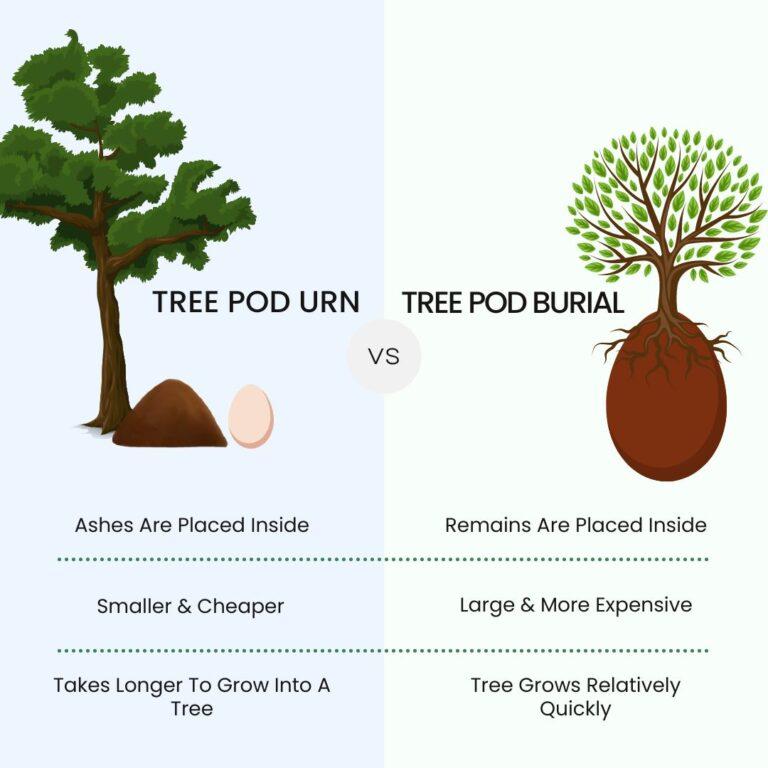
Created in 2003 by designers Anna Citelli and Raoul Bretzel and their company Capsula Mundi, the tree pod burial is a response to the lack of conservative designs of coffins in the funeral industry. Since then, competitors have offered similar services with their cremation pods, but Capsula Mundi has been developing its unique whole-body pods for a few years.
Here are the different tree pod burial options:
Whole-Body Pods
A whole-body pod requires the body to be placed in the fetal position and inserted into the pod with a tree growing on top of the pod. In a few days, the biodegradable pod will break down and help provide nutrients to the planted tree. This method requires you not treat the body with any embalmment chemicals.
This method isn’t approved and cannot be purchased currently. However, Capsula Mundi is working to bring these pods to the market, and we hope to hear news soon. We can expect these pods to cost more than their cremation pod options.
Cremation Pods
A cremation pod requires the body to be cremated and placed into a specialized, biodegradable urn. The urns have been made to reduce the overall PH levels that come with cremated ashes and provide a suitable environment for the plant of your choice.
Currently, these pods are the only tree pod burial options available. Saplings are not usually included in the price of the pod, so be aware of what you’re buying and burying.
Tree Pod Burial Cost
While the whole-body pod cost has not been disclosed, cremation pods can cost you anywhere from $135 to $370 — excluding sapling prices. Each company prices its pods differently, and shipping costs depend on the country you purchase from. Here are the options available to you:
- Capsula Mundi: $370 with a two-year warranty. Sapling is not included.
- The Living Urn: starting at $135. An additional sapling will cost $35.
- Bios Urn: $140
According to the National Funeral Directors Association, the median price of a casket is $2,500 and an urn is $295, so you will be saving by choosing a tree pod burial instead of traditional burial options.
Of course, the urn is only the start of the funeral costs in the US. Services, funeral home expenses, cremation services, and purchasing a plot of land to host the tree pod burial will add up, and you can expect to pay around $4,000 for a full tree pod burial — around $2,280 cheaper than traditional cremation.
Tree Pod Burial Locations
Are tree pod burials legal in my state? Yes, tree pod burials are legal in all states. However, each state and funeral home will have different rules and regulations for a tree pod burial. Generally, funeral planning restrictions involve the funeral director, private vs public land for burial, process for preservation, and so on.
It’s important to consult your state’s regulations before pursuing a tree pod burial. If you’re looking for a green funeral home, the Green Burial Council has generated a list of all the certified green cemeteries you can visit.
Common Types of Trees for Pod Burials
There are plenty of options regarding tree choices, and it is up to you to choose the tree that you think would honor your loved one the most. However, there are a few considerations you should think about such as climate and space needed for your tree.
Here are a few popular choices we’ve seen used for your consideration:
1.
Red Maple
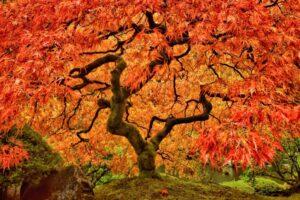
The most popular tree pod burial option and for good reason. The red maple provides the perfect balance of beauty and resilience. Displaying color all year round, red maple trees can survive in all kinds of climates and are found all across America. They also grow relatively fast, maxing out at 3 feet yearly.
2.
Dogwood

With a white and pink variety, this tree has become very popular in landscaping. It offers plenty of shade and doesn’t shed its leaves in the fall. It prefers dry soil with minimal water and sunlight.
3.
Flowering Cherry

Originally from Japan, this tree has bright, pink foliage. This tree does well in moist but well-drained soil. It requires an acidic soil environment, which pairs well with the acidic quality of cremation ashes. They don’t need an overabundance of water or sunlight.
4.
Sycamore
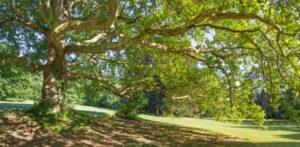
One of the best trees for blocking out the sun. Sycamores grow incredibly fast and are one of the largest trees you can find. They are resistant to pollution, wind, drought, and excessive rain.
5.
Crape Myrtle
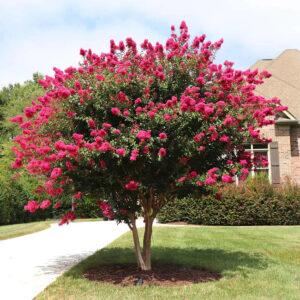
With plenty of color variations such as purple, pink, white, red, and more, crape myrtle trees are one of the more versatile options. It is also perfect for those with minimal space as they grow fast and remain at a manageable size. They are also relatively hardy and can resist drought well.
Please remember that around 50% of saplings grow into mature trees even if they are in ideal environments, so you must do the work to maintain the tree growth.
Are Tree Pod Burials Environmentally Friendly?
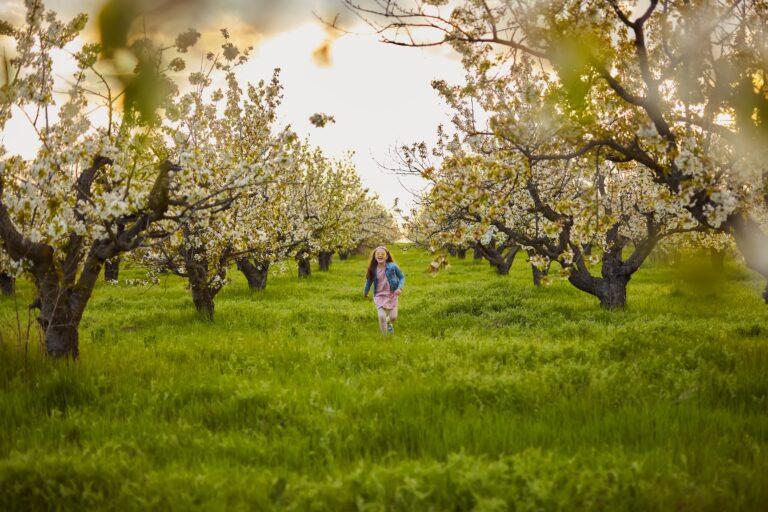
Do tree pod burials qualify as a “green burial”? Well, that will depend on your definition of environmentally friendly. Unfortunately, because whole-body pods are unavailable as of 2024, you will have to settle for a cremation pod, which requires your body to be cremated.
According to the Earth Funeral Group, one cremation will still emit 535 pounds of CO2 into the environment, so it isn’t the most eco-friendly option available. However, the upside is that you are planting a tree that offsets the environmental impact of a cremation.
Other Green Funeral Options
- Natural Green Burial ($1,740 – $5,225): burial in a green cemetery with no embalming, burial vaults, or caskets.
- Water Cremation ($1,300 – $4,000): a cremation method that uses a water and alkali solution, heat, and pressure in a chamber.
- Body Donation (free): donating your body to scientific research allows future doctors to study the human body or progress medical tests at a research facility.
How to Use Final Expense Insurance for a Tree Pod Burial
Can you use final expense insurance for your tree pod burial? Yes, you can use burial insurance for any expenses you incur at a tree pod burial. Final expense insurance can cover the funeral costs, repay debts, or settle any monetary issues you might have had before passing. Because of the flexibility of final expense insurance, you can use your insurance to cover the cost of a tree pod burial.
At Final Expense Benefits, we help you connect with our talented agents to find the burial insurance that works for you, your lifestyle, and your family. We only work with the top carriers in the nation such as:
Just to name a few. Call our agents at (866) 786-0725 or use our quoting tool at no charge to reduce the stress of deciding between different insurance policies.
Conclusion
Having a tree pod burial sounds like an idyllic way to use your remains and give life in an eco-friendly way, but there are a few considerations you should consider. The environmental impact of your cremation, where you can grow your tree, and other green burial methods. Most importantly, you need to consider the costs associated with a tree pod burial and if you can afford this burial method.
Luckily, Final Expense Benefits is here to help you with the financials. We specialize in funeral insurance that can help you pay for your final expenses, debts, and more. Call us at (866) 786-0725 or use our free quoting tool to find the right coverage for you.
Frequently Asked Questions
How Does a Tree Pod Burial Work?
A tree pod burial works by cremating the body or placing it in a pod. It’s put under a sapling to help feed nutrients to the tree.
Can You Have a Tree Pod Burial Without Cremation?
Unfortunately, you cannot have a tree pod burial without cremation as of 2024. Capsula Mundi is still looking at the viability of a whole-body pod, but it has yet to be released for retail.
How Much Does a Tree Pod Burial Cost?
A cremation pod can cost as little as $135, and other funeral costs can be upwards of $4,000.
